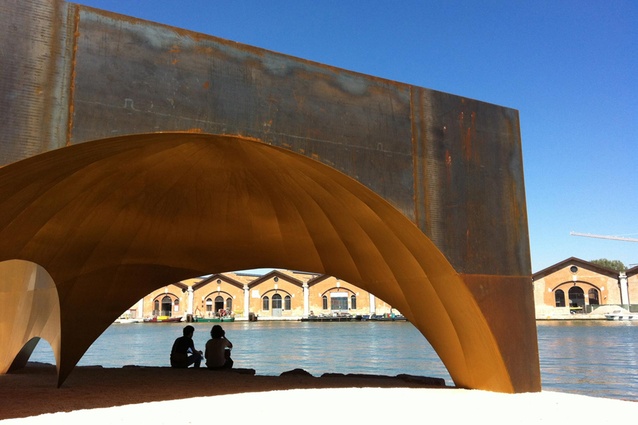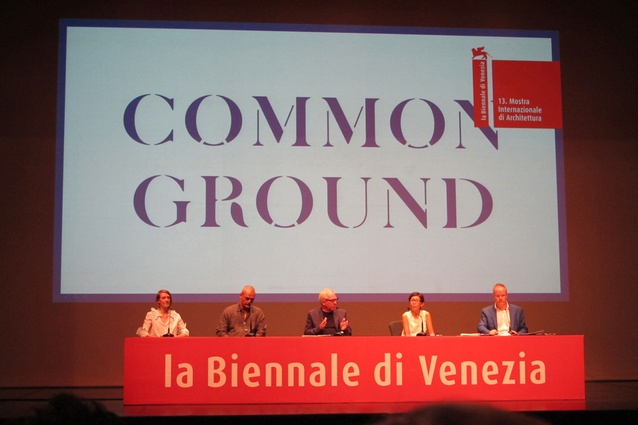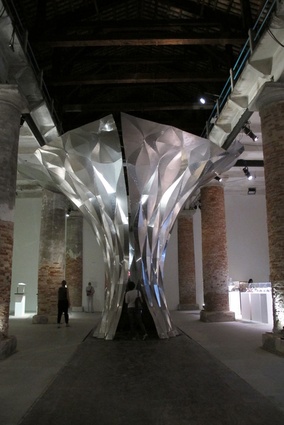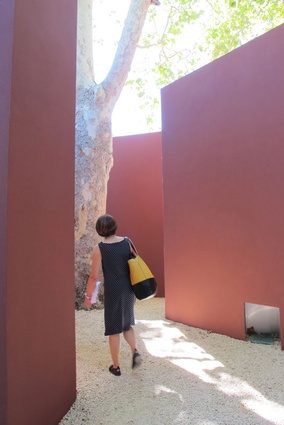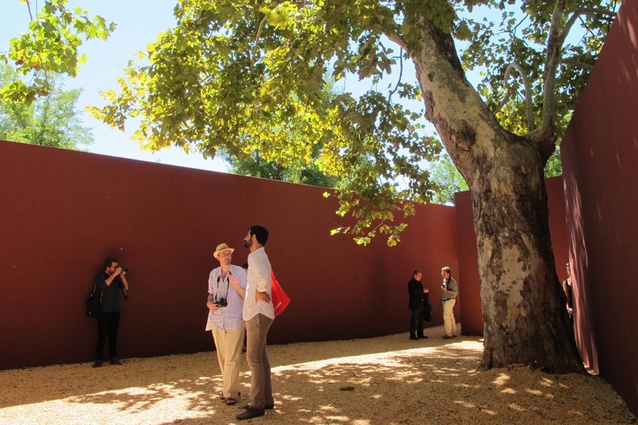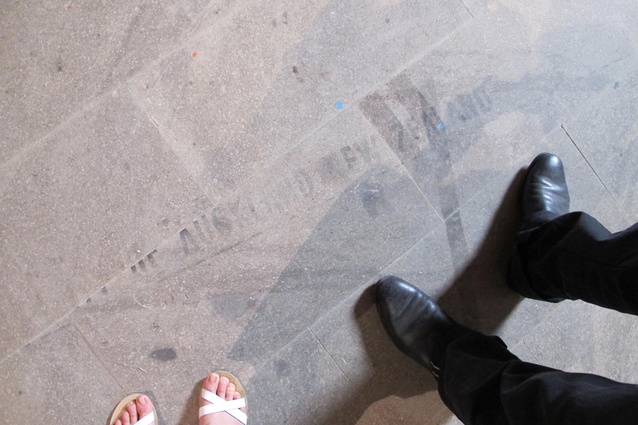Highlights from the Arsenale
Today was the first day of the Vernissage proper – the preview for press and exhibitors. We spent the day looking around the Arsenale – the former medieval shipbuilding yards. First on our agenda was a panel session on mentors and mentoring chaired by global curator-on-the-move Hans Ulrich Obrist, David Chipperfield, Kazuyo Sejima, and two younger designers – Alison Cranshaw of MUF, and Jordanian architect Sahel Al-Hiyari. The best line was from Chipperfield: “Architecture is a strange process – you have to be full of confidence and full of doubt.”
It’s great to be out of our sweltering room at the Palazzo Bembo, but it was still exhausting. The display is gigantic – the walk through the Arsenale exhibits from the entrance to its furthest sections is about a kilometer. In the morning session we started at the entrance and made it about a third of the way in; in the afternoon we started at the far end and worked backwards, but there was still perhaps a third of the exhibits in the middle we didn’t get to.
Highlights included Anupama Kundoo’s astonishing 1:1 reconstruction of her Wall House in India, and Aires Mateus 20-tonne steel structure perched elegantly over the water’s edge. A display curated by Zaha Hadid looked at the historical development of shell structures and included Arum, a large, new, pleated metal structure of her own design. Another favorite were two full-scale structures in one of the gardens – Alvaro Siza’s relaxing courtyard sheltered in the shade of a large tree, and a series of rooms looking out across the harbour by his protégé, Eduardo Souto de Moura. During our walk we came across the space where Andrew and Simon had worked on The University of Auckland’s Venice Prize-winning installation back in 1991. We were surprised to find the lines and text they had drawn as part of the display were still visible on the stone floor.
There were architectural stars out and about. Patrick spotted Zaha Hadid on the ferry and Andrew came across Richard Rogers relaxing in shorts and sunnies. We had one funny moment when Mel looked up from an exhibit to find herself standing next to Peter Zumthor, but when he saw her see him (if you follow), he literally ran away into the next room. It seems his reclusive reputation is well deserved.

